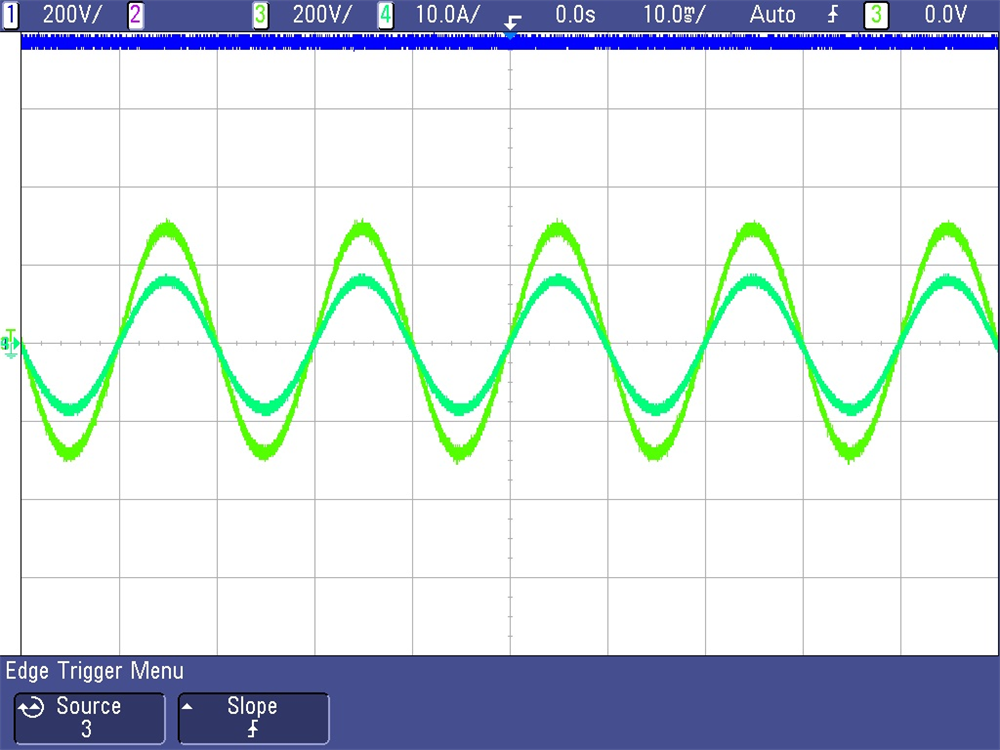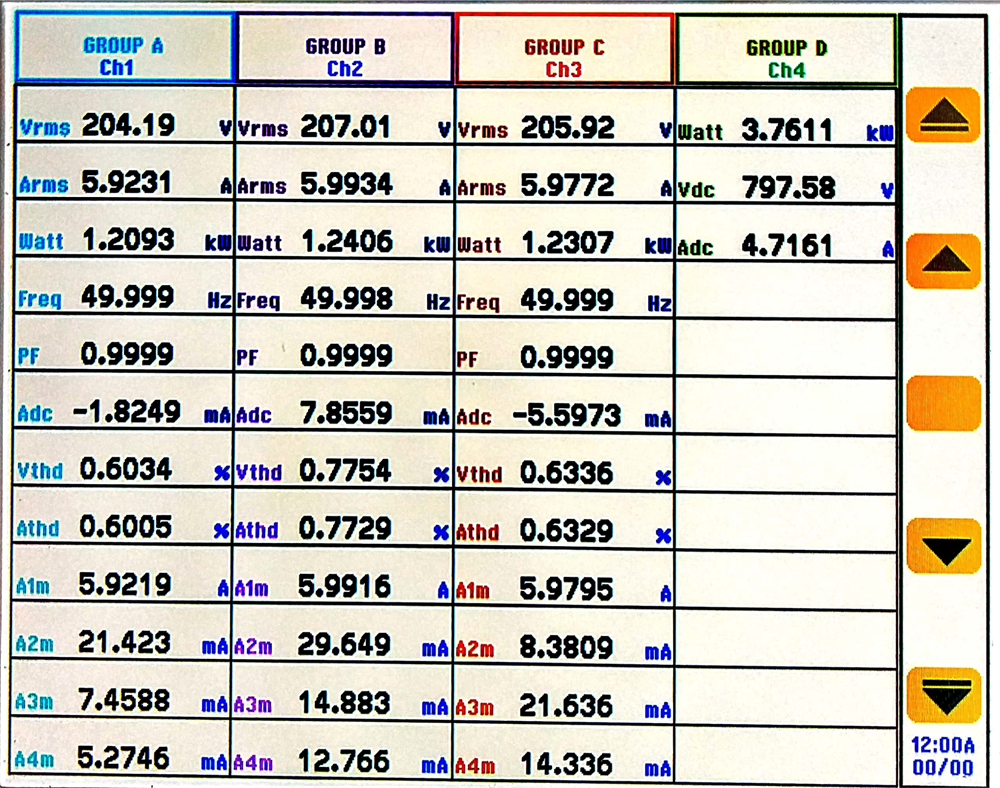TIDUE53I march 2018 – july 2023 TMS320F28P550SJ , TMS320F28P559SJ-Q1
- 1
- Description
- Resources
- Features
- Applications
- 6
- 1System Description
- 2System Overview
-
3Hardware, Software, Testing Requirements, and Test Results
- 3.1 Required Hardware and Software
- 3.2 Testing and Results
- 4Design Files
- 5Trademarks
- 6About the Authors
- 7Revision History
3.2.5.3.1 Inverter Closed Loop Results
The inverter is tested in the closed current loop in Lab 3 where the current reference is varied by changing the variable TINV_idRef_pu from the watch window. Setting this value to around 0.35 pu should deliver around 3.5 kW of power at the AC terminals. Figure 3-51 shows closed current loop operation and the efficiency results obtained. Scope signals: Channel 1 - DC link voltage (blue), Channel 2 - AC voltage (light green), Channel 3 - AC current (dark green).
 Figure 3-51 Inverter Closed Current Loop Waveforms
Figure 3-51 Inverter Closed Current Loop WaveformsFigure 3-52 shows power key efficiency and THD figures captured with power analyzer at 3.8 kW.
 Figure 3-52 Inverter Closed Current Loop Results
Figure 3-52 Inverter Closed Current Loop Results